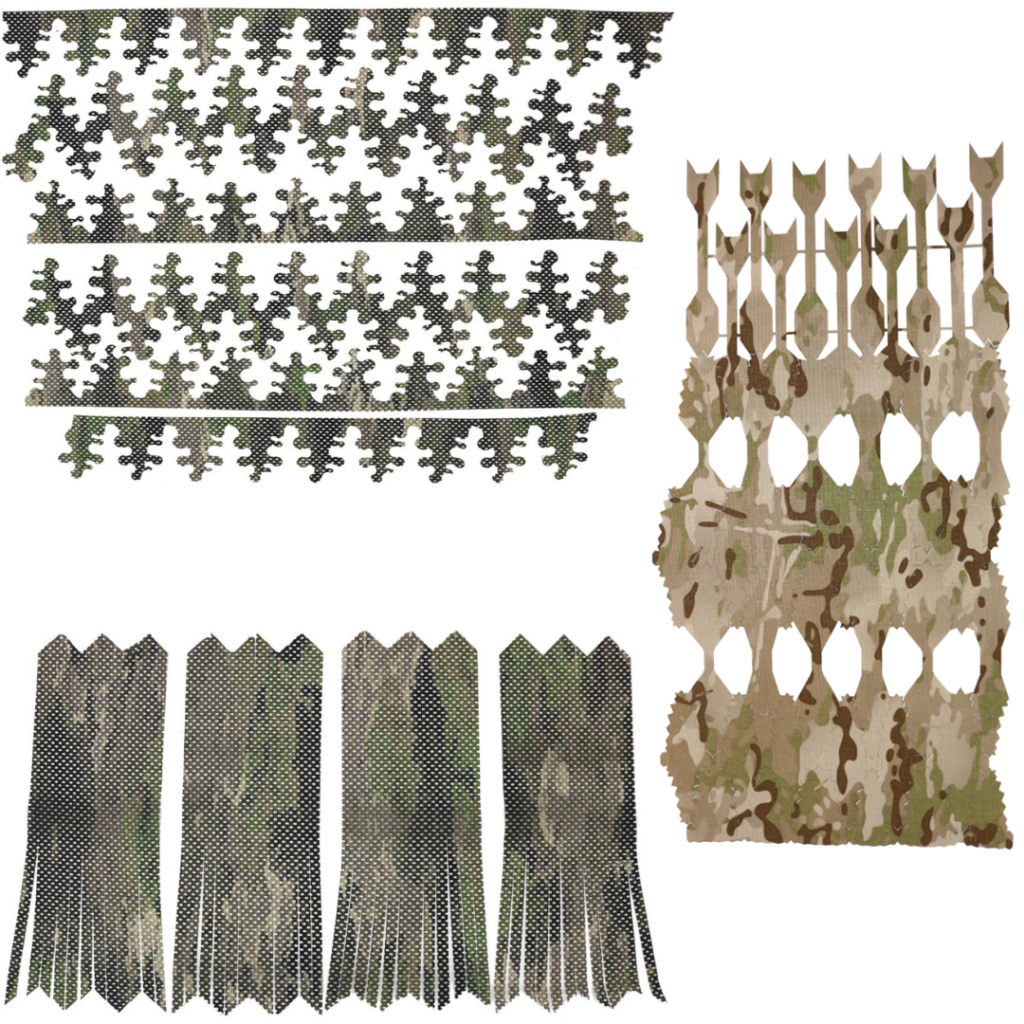Ghillie suits are specialized camouflage clothing designed to resemble heavy foliage. They are commonly used by military snipers, hunters, and wildlife photographers. Proper training and understanding of techniques can significantly enhance the effectiveness of ghillie suits. Here are some key techniques and best practices:
1. Construction and Customization
- Base Suit: Start with a good-quality base suit that fits well.
- Materials: Use natural materials from the environment where you will be operating (e.g., twigs, leaves, grasses) to blend in. If foliage is not accessible then utilize Beez Combat Systems Predator Ghillie™ ANY WRAP PACK and/or SPECTRALFLAGE THERMAL LOAD REDUCTION PACK (TLRP).
- Attachment: Securely attach materials to your suit using strong threads or zip ties. Ensure that the materials are lightweight and do not hinder your movement.
- Color Matching: Dye the suit to match the predominant colors of your operational environment. Ghillie washes are also an option.

2. Blending with the Environment
- Observation: Study the environment thoroughly to understand its color palette, textures, and patterns.
- Adaptability: Continuously adjust the suit to reflect changes in the environment (e.g., seasonal changes).
- 3D Elements: Add three-dimensional elements to break up the outline of your body. This includes using burlap, jute, or synthetic fibers to create a textured surface. A simple yet effective and affordable option is the Beez Combat Systems Predator Ghillie™ ANY WRAP PACK and the TLRP. and TLRP-L (Leafy).

3. Movement Techniques
- Slow Movements: Move slowly and deliberately to avoid drawing attention.
- Low Profile: Stay low to the ground, using crawling techniques such as the leopard crawl or the military low crawl.
- Pauses: Use frequent pauses to observe the surroundings and ensure you are not detected.
- Silent Movement: Minimize noise by avoiding dry leaves, twigs, and other noisy terrain.
4. Scent Control
- Scent Elimination: Use scent elimination sprays and washes to reduce human odor.
- Wind Awareness: Always move downwind from your target to prevent them from picking up your scent.
5. Training and Practice
- Field Drills: Regularly practice in different environments to get accustomed to various terrains and conditions.
- Observation Skills: Enhance your observation skills by practicing spotting and identifying objects while in your ghillie suit.
- Feedback: Work with a partner to get feedback on your concealment and movement techniques.
6. Maintenance and Care
- Repairs: Check for any wear and tear, and make necessary repairs to maintain the suit’s effectiveness. Keep available additional material and supplies.
- Storage: Store the suit in a dry, dark place to prevent mildew and fading. A suitable, effective and affordable option for storage is the Beez Combat Systems Predator Ghillie™ DEPLOYMENT SLEEVE.

7. Advanced Techniques
- Shadow Use: Position yourself in shadows to further obscure your outline.
- Background Matching: Align yourself with a similar background to enhance your concealment.
- Distraction: Use decoys or distractions to divert attention away from your position.

By following these techniques and regularly practicing, you can maximize the effectiveness of your ghillie suit and improve your camouflage skills in the field.
